Industrial Chimneys, Stacks and Cooling Towers
| |
Our team have wide experience in design > fabricate > Erect, of wide range of chimneys, cooling towers and industrial stack towers, and could also fabricate them from galvanized steel or aluminum and with or without insulations
- Special industrial chimneys for power plants, cement plants, chemical and petrochemical projects
- Cooling towers (Special industrial radiators) for power plants, refineries, chemical plants.
|
| |
|
|
|
| |
Natural draft cooling tower
The natural draft or hyperbolic cooling tower makes use of the difference in temperature between the ambient air and the hotter air inside the tower. As hot air moves upwards through the tower (because hot air rises), fresh cool air is drawn into the tower through an air inlet at the bottom. Due to the layout of the tower, no fan is required and there is almost no circulation of hot air that could affect the performance. Concrete is used for the tower shell with a height of up to 200 m. These cooling towers are mostly only for large heat duties
because large concrete structures are expensive. |
|
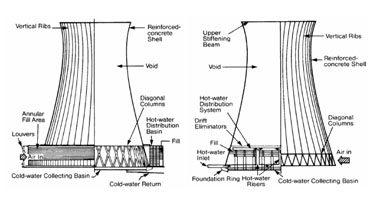 |
| |
|
|
|
| |
Industrial stacks and Chimneys
Usually a vertical pipe, channel or similar structure through which combustion product gases called flue gases are exhausted to the outside air. Flue gases are produced when coal, oil, natural gas, wood or any other fuel is combusted in an industrial furnace, a power plant's steam-generating boiler, or other large combustion device. Flue gas is usually composed of carbon dioxide (CO2) and water vapor as well as nitrogen and excess oxygen remaining from the intake combustion air. It also contains a small percentage of pollutants such as particulate matter, carbon monoxide, nitrogen oxides and sulfur oxides. The flue gas stacks are often quite tall, up to 400 meters, below are actual photos of some of projects we awarded in fabrication and installation in Iraq. |
|
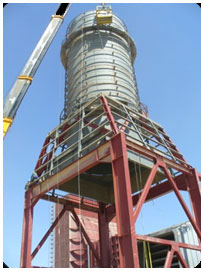 |
| |
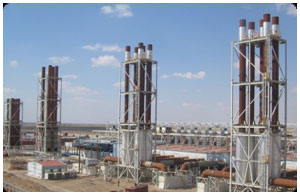 |
| |
|
|
|
| |
Other types of air towers (IN/OUT Air Processing)
- Primary goal is to market the LNG Air Tower Vaporization process
- This patented process enables builders of LNG Receiving Terminals to heat the LNG by using the heat of the ambient air via a Heating Tower
- The proprietary process
- creates substantial cost savings with high ROI
- reduces emissions
- has no impact on marine environment
- The process is being used on production scale at the LNG Receiving Terminal in Freeport, Texas. Operation has started in June 2008.
- Conservative estimates show that the annual fuel gas consumption can be reduced by 70% compared to a regular fuel gas vaporizing
- Processes under weather conditions in the Gulf Coast area.
|
|
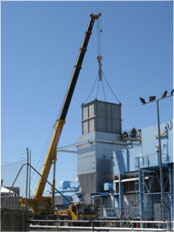 |
| |
 |
| |
 |
| |
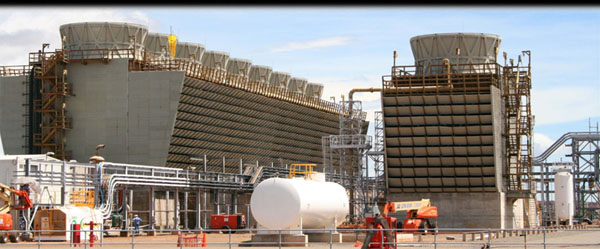 |
|